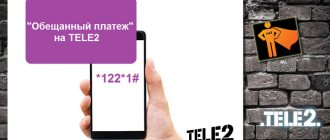Today, two or three TVs in a house or apartment will not surprise anyone. However, different family members may have their own preferences. This means that it is necessary to organize MTS satellite TV on 2 TVs so that on each of the connected devices you can watch channels that are different from each other. Switching is done in different ways. But one thing remains the same: each TV will need its own set-top box or CI module.
Connecting 2 TVs to one antenna
The best way for a family is to use one satellite dish, sending the signal to 2 TVs. You can connect each device in several ways. They all have both advantages and disadvantages.
Via splitter
A splitter is a fairly simple device. It is inexpensive, has one input and a group of outputs. The connection diagram for several TVs looks like this:
- the cable from the antenna is connected to the splitter input;
- Wires go from the outputs of the device to each of the TVs.
This method has many disadvantages. A simple splitter does not provide sufficient shielding from interference. In addition, a drop in signal level is observed at each of the outputs. And the more TVs the user wants to connect, the less guarantee he has to get a high-quality image on them.
Via converter
Installing a converter with two outputs allows you to easily connect a second TV to MTS TV. A device of this class is quite affordable for the average user. The connection diagram is also not difficult:
- the converter is installed in its regular place, on the support post of the antenna unit, the tilt is adjusted;
- A cable is sent from each output to the set-top box or CI module of the TV.
In this way, you can connect up to 8 devices to one antenna without a drop in signal quality. This is the main advantage of the method.
He has one drawback. The user may simply not have a sufficient level of qualifications to mount the converter and configure it correctly and connect it to the antenna unit. He will have to call an MTS specialist or resort to other outside help. And this means additional costs, both time and money.
Via multiswitch
Using a multiswitch is the most expensive method. It is irrational if you want to connect two or three TVs to one antenna. The multiswitch is designed for switching several signals and distributing them to consumers, the number of which exceeds 8 units. However, a multiswitch will be indispensable if it is necessary to combine a group of antennas and a large number of televisions into a single network.
Is it possible to connect a satellite dish to several TVs?
The optimal option for connecting satellite
antennas for
several TVs
If we talk about two, three or four
TVs
connected to one
satellite
dish.
... 2 or 4 cables come out of each converter and are connected to separate disk drives, each of which is connected to separate satellite
receivers and
TVs
.
THIS IS INTERESTING: Frequently asked question: When should you change the oil in a Datsun gearbox?
Connecting 2 or more TVs to one set-top box
If you connect a second TV to the MTS set-top box, the same channel will be broadcast on both devices. At first glance, this doesn't make any sense. However, if we imagine a situation where a subscriber wants to move from room to room, from a building on a plot of land to another, and at the same time not miss his favorite TV show, two TVs on one set-top box are quite convenient. Today there are many solutions that allow you to organize full-featured switching of this kind.
Switching methods
There are many ways to connect two TVs to one set-top box.
- Connection to different outputs of the set-top box. There can be quite a lot of them: analog RCA, SCART, HDMI, high-frequency RF.
- Through a splitter via high-frequency radio channel output.
- Using HDMI, RCA splitters.
- Using extenders for HDMI and RCA interfaces.
The extender consists of two modules, a receiver and a transmitter. The latter outputs a signal to the first TV and broadcasts it. The second TV connects to the receiver and has its own IR port. Commands from the remote control are transmitted in the opposite direction to the module connected to the set-top box.
Thus, a user, even from a neighboring room or building, can switch channels and use other functionality. And if you consider that the range of wireless HDMI and RCA extenders can be 500 meters or more, it is clear how easy it is to build a large-scale signal exchange network if there is such a need.
Disadvantages of the method
As mentioned above, the main disadvantage of connecting two TVs to one set-top box is the same broadcast channel on both devices. There are other disadvantages to each method. Connecting to different ports places excessive stress on the electronic components of the set-top box.
When using a radio channel output splitter, you will have to put up with a drop in signal level or spend money installing intermediate amplifiers. And the use of HDMI, RCA extenders, although it offers maximum possibilities, will require significant financial expenses.
Description of MTS kits for 2 TV
MTS fully understands the needs of its subscribers and offers ready-made solutions for connecting two TVs to one antenna. These are kits consisting of a 600 or 900 mm deflector, a two-output converter, a pair of attachments or CI modules. The cost of equipment, regardless of class, is 8,000 rubles.
It should be especially noted that additional TVs will cost subscribers less. The subscription fee for the first viewing device is 195 rubles per month. The Multiscreen service, as well as kits for 2 TVs, allows you to watch individual channels on a second TV for only 70 rubles per month. The third device connected in an apartment or house will cost the same amount.
ATTENTION!
Many families now have two or even more televisions, and on each of them they want to have a wide selection of channels. Of course, you can connect each TV to its own antenna, but there are cheaper methods.
There are different ways to connect multiple TVs to one antenna, and in this article we will talk in detail about each of them:
- by installing a cable splitter (divider)
- using a converter with two outputs
- via multiswitch
The above connection methods assume the presence of a separate satellite receiver for each TV. At the end of the article you will also find information on how to connect several TVs to one set-top box, if necessary.
"Multiroom" from MTS will put an end to the battle for the remote control
Vladivostok, RF – MTS PJSC (NYSE: MBT), the largest telecommunications operator in Russia, announces its commercial launch in the regions of the Far East and Eastern Siberia: subscribers will have the opportunity to watch channels in digital quality on several TVs, while re-subscribing to the basic and themed TV packages are not required.
Since November 2, 2015, it is available to new and existing home digital TV subscribers from MTS, including as part of package offers. The service is provided to residents of the Primorsky, Khabarovsk, Trans-Baikal Territories, Amur, Irkutsk regions, and the Republic of Buryatia. Within one household, a user can activate up to five TV receivers; the same set of TV channels will be available to the subscriber on all TVs.
The connection is free, the subscription fee is 50 rubles per month for each additional connected TV. To watch TV content on the second and subsequent devices, special equipment is required: a set-top box or a CAM module, which can be purchased or rented.
“Today, having two or more televisions in the house is a common practice for Russian families. In this regard, we see the need for digital TV users to watch their favorite channels without being tied to a specific TV device. At the same time, development prospects are associated not only with an increase in the number of televisions in the country’s households, but also with an increase in the amount of interesting content within home TV as part of basic and thematic packages. Thanks to the launch, MTS subscribers can simultaneously watch different films and programs on several TVs without re-subscribing, which will ultimately lead to optimization of the home budget, as well as prevent possible disagreements when choosing a particular channel,” said the director of fixed-line business in the Far Eastern regions East and Eastern Siberia Nikolay Lyazer.
You can find out detailed information and connect on the website www.dom.mts.ru, in the MTS contact center by phone 8-800-250-00-50 or in the telecom operator’s showrooms.
Development of MTS fixed networks in the regions of the Far East and Eastern Siberia
Today, MTS, along with mobile services, provides fixed communication services in the Far East and Eastern Siberia - home Internet and digital television in the Khabarovsk, Trans-Baikal, Kamchatka and Primorsky territories, as well as the Amur region and Irkutsk region, the Republic of Buryatia. The MTS fixed-line network in the regions of Eastern Russia is built using FTTB (“fiber to the home”) and Ethernet technology, which provide connections at speeds of up to 100 Mbit/s and allow broadcasting high-quality digital television in DVB-C format. Over the past year, MTS has quadrupled the number of digital television subscribers in the regions of the Far East and Eastern Siberia. Today, every second MTS cable television subscriber in the Far East and Baikal region watches television programs in digital quality. The highest percentage of penetration of MTS digital television is in the Irkutsk region (73%), followed by Chita (47%).
As an advertisement.
How to connect two TVs to one antenna
Connection diagram via divider
Connection diagram via converter
TV splitter
Other device names: cable splitter, divider, CRAB
The essence of the method: separating the signal from one cable into two cables.
It is important to remember that if you choose this method, the signal quality may deteriorate, which will affect the picture and sound of TV programs. Therefore, when choosing to connect 2 TVs through a divider, be sure that the source signal is sufficiently strong. If you connect 3 or more TVs, use a signal amplifier (installed on the cable next to the antenna).
A cable splitter cannot be used if the satellite operator uses different polarization for different channels (for example, Tricolor). In this case, connect a converter with two outputs.
How to choose a cable splitter
When choosing a cable splitter, consider the following parameters:
- Bandwidth Different types of television signals (terrestrial, cable, satellite) have different frequencies, so the splitter must have the appropriate frequency bandwidth. For example, for terrestrial television, support for frequencies of 5 - 1000 mHz is sufficient, but for satellite television, a band of 5 - 2400 mHz is needed. That is, a divider for satellite TV can be used for terrestrial TV, but not vice versa.
- Number of outputs It is easy to understand that you need as many outputs as the number of TVs you plan to connect. There are television splitters with 2, 3, 4, 6 or 8 outputs. In order not to “wastely” weaken the signal, it is recommended to purchase a divider with the number of outputs needed right now. These devices are not that expensive, and when you buy another TV, you can replace the splitter with another one with the required number of outputs. If you still buy a device “for growth,” install a resistor on unused outputs that will absorb excess voltage in the circuit (up to 75 Ohms).
- Cable connection method - screw clamp: suitable for cables of any diameter and does not require soldering - thread: only for thin cables, does not require soldering - coaxial sockets: cable diameter is not important, connection via plugs - splitters requiring soldering: the most reliable connection, but need special skills
- Signal attenuation indicator Information about this can be found on the case or in the instructions for the television splitter. The lower the signal attenuation, the better.
- Manufacturer Recommended manufacturers of cable splitters: Lans, Rexant, Premier, Alda, Hama, Sat
How to connect
- Select installation location The divider is placed as close to the TVs as possible, minimizing the cable length after branching if possible.
- Cut the cable at the selected installation location
- Connect the cable to the splitter input via the F-connector or in another way (more about connecting via the F-connector)
- Cut cables for connecting TVs
- Connect the cable sections to the splitter outputs and to the connectors of receivers/TVs
- For private clients
- For home
- Services
- Catalog of services - Satellite TV
- Multiroom
and “Interactive Multiroom” provide the ability to connect up to 4 additional TVs in your home
and “Interactive Multiroom” are provided on the tariffs of “Home Digital MTS TV” and “Interactive MTS TV”, including package offers (“Internet + TV”, “Internet + TV + Telephone”, “TV + Telephone”).
To connect additional TVs, additional equipment is required - an HD set-top box/CAM module (for Digital TV) or an ITV set-top box (for Interactive TV), which are issued on standard terms of purchase or rental.
On all TVs, the same set of TV channels is available to the subscriber for viewing. When you connect/disconnect thematic packages of TV channels, access to them will be open/closed on all TVs within Multiroom.
Payment for additional TV channels and thematic packages of TV channels for each additionally connected TV is charged according to the current tariffs for channels/packages.
| Cost of connection and setting up a TV set-top box | For free |
| Monthly “Multiroom” fee for each additional TV | 50 rub./month |
| Monthly Interactive Multiroom fee for each additional TV | 130 rub./month. |
| Rental of each additional ITV set-top box | 130 rub./month. |
| Rental of each additional HD set-top box | 110 rub./month. |
All prices include VAT.
Connection and disconnection, as well as management of additional thematic packages is available:
- in your personal account
- in MTS showrooms;
- through the contact center operator by phone 8-800-250-08-90 (toll-free call).
1. “Multiroom” is a service that provides the ability to watch a TV package on several TV receivers at the delivery address.
2. If at the delivery address there is a need to watch TV packages on several TVs, then you need to connect for each TV.
3. It is possible to connect up to 4 additional TV set-top boxes at the delivery address. Thus, at one address, the “Basic” TV package is available for viewing on 5 (five) TVs.
If two or more are connected to a single address, the subscriber has the opportunity to connect such a number that the number of set-top boxes used to watch TV does not exceed 5 (five). For example, 2 (two) are connected to a single address, the subscriber has the opportunity to connect 3 (three).
4. provided on all tariff plans of “Home Digital MTS TV”, including package offers (Internet + TV, Internet + TV + Telephony, TV + Telephony).
5. To watch TV channels on the second and subsequent TVs, you must have a set-top box or CAM module.
6. Rental of the second and subsequent set of equipment upon connection is paid by the subscriber on standard (basic) terms (no discount is provided for the purchase and rental of the second and subsequent TV set-top boxes and CAM modules).
For example, a subscriber wants to connect on one TV. His monthly fee will consist of:
- monthly fee (according to the connected tariff)
- monthly fee - 50 rub./month,
- the cost of renting each of the TV set-top boxes or CAM modules.
Read more about digital TV equipment and the conditions for its purchase in the “Equipment” section.
7. On all televisions, the same set of TV channels is available to the subscriber for viewing. When you connect/disconnect thematic packages of TV channels, access to them will be open/closed on all TVs within Multiroom.
8. The subscriber pays the cost of the “Basic” package and connected additional packages of TV channels in full for the television receiver on which it is connected, in accordance with the connected tariff plan.
9. The cost of connecting and disconnecting is 0 rubles. The billing period is a calendar month. Calculation of monthly fees upon connection and disconnection: in proportion to the number of days until the end of the current billing month.
10. Monthly fee is 50 rubles/month.
11. Monthly fees for “Basic” and additional TV packages are charged only within the limits.
12. Connection and disconnection methods:
- in the MTS showroom;
- via Contact Center: 8 800 250 0890 (toll-free call)
13. In case of independent connection of additional TV channels by the subscriber (for example, using the “Personal Account” service), as well as by submitting an application to the contact center or through specialists of MTS showrooms, access to the connected package of TV channels on the 2nd and subsequent TV- receivers, when connected, will be added automatically within 24 hours after they are added on the 1st TV receiver.
14. Available for connection only if technically possible.
is one of the leaders among companies providing television, telephony and Internet services to the population. You can connect any service very simply by contacting the office, website, or calling the specified phone number. In this article we will take a closer look at what “Multiroom” from MTS is.
How to connect MTS Multiroom?
There are 3 main ways to connect MTS:
- Activate the option in the subscriber’s personal account.
- Visit the nearest provider office and ask the managers working there to connect the option.
- Call the contact center (88002500890) and launch the option through support consultants.
In each case, clients should think about paying for the equipment in a timely manner and paying a subscription fee for activation without the required amount in the account will not be possible.
Settings and specifying the required number of TVs are made using the same methods as connection. Deactivation will also require visiting your personal account or calling consultants.
What does MTS offer?
By connecting “Multiroom”, you get the opportunity to watch different TV shows included in the “Basic” and “Interactive MTS TV” TV packages on separate TVs.
There can be no more than five TVs in total. The service is in great demand in multi-room apartments, where everyone wants to watch their own program. You will also have the opportunity to start watching a program on one TV and finish watching it on another. For example, you watch a movie in the hall, and at lunchtime you finish watching it in the kitchen.
Tariffs from MTS
The company connects and sets up a TV set-top box for its users for free, but for other services you must pay a monthly fee:
- for each separate TV - 50 rubles.
- “Interactive “Multiroom” for each TV - 130 rubles.
- ITV set-top box (rent) - 130 rubles.
- HD set-top box (rent) - 110 rubles.
- CAM module (rent) - 110 rubles.
There is a monthly fee for each individual device. That is, if you have “Multiroom” installed from “MTS” on only one additional TV, then you will pay only 50 rubles to receive the service. If there are two such devices, then 100 rubles, etc.
Digital television
You can connect digital television simultaneously to 2, 3 and 4 TVs, except for the main one. That is, you can watch programs on five different TVs. The service package includes:
- More than 130 channels, and 30 of them are in HD quality. ·
- Ability to connect additional subscriptions to watch your favorite programs.
- Database with more than 15 thousand films and TV series.
- Installing the “TV pause” and “TV recording” service.
And the presence of many more additional benefits and services, which you can learn more about by calling the specified phone number. In order to receive television from MTS, you do not have to be a subscriber, the main thing is that you have Internet access from any provider.
"Multiroom": MTS subscribers can connect TV packages on several TVs for free
One of the largest telecommunications operators in Russia is launching. From November 2, MTS subscribers in the Volga region will be able to watch channels in digital quality on several TVs without re-subscribing to basic and thematic TV packages.
The service will be available to both newly connected and existing subscribers. At the same time, the service is provided both in the format of a mono-service and as part of package offers. In one household, it will be possible to connect up to 4 TV receivers to Multiroom, which will broadcast the same set of channels.
The connection is free, the subscription fee is 50 rubles per month* for each additional connected TV. To watch TV content on the second and subsequent devices, special equipment is required: a set-top box or a CAM module, which can be purchased or rented.
“Having two or more TVs in the home is becoming a common practice for Russian families, and we see the need for our digital TV subscribers to watch their favorite channels and use subscriptions without being tied to a specific TV device. Every month the number of televisions in the country's households is growing, the content within home TV as part of basic and thematic packages is becoming more diverse and interesting, so we are confident that it will be in demand among MTS home digital TV users. This service will help our subscribers simultaneously watch their favorite programs and movies on different TVs within one subscription. This will ultimately help optimize the home budget and achieve a truce in the “battle for the remote control,” said Anton Nazarovsky, commercial director of MTS in the Volga region.
You can find out detailed information and connect on the website www.dom.mts.ru, in the MTS contact center by phone 8-800-250-00-50 or in the telecom operator’s showrooms in the Volga region.
MTS fixed-line network in the Volga region
Today, MTS, along with mobile services, provides in the Volga region a full range of fixed communication services in the Nizhny Novgorod, Saratov, Ulyanovsk, Penza, Kirov regions, in the Republics of Tatarstan, Udmurtia, home Internet and telephony - in the Samara and Orenburg regions, Bashkortostan, home Internet and digital television – in the Republic of Mari El. The MTS fixed-line network in the Volga region is built using FTTB (“fiber to the home”) and Ethernet technology, which provide connections at speeds of up to 100 Mbit/s with the prospect of increasing to 10 Gbit/s and allow broadcasting high-quality digital television in DVB-C format .
Thanks to consistent steps to increase quality content for all users of digital TV from MTS, up to 130 news, entertainment, educational, and sports channels using DVB-C technology in Russian regions are available to subscribers as part of the basic package, 26 of which are in HD quality. In addition, users can additionally connect thematic packages, including Our Football, Viasat Premium HD, Amedia Premium HD, KHL HD, Adult and Egoist.
*offer valid on the day the ad is released
as an advertisement
photo: https://digit.ru/
Satellite TV from MTS
By purchasing satellite TV, even in the basic package you get:
- Up to 189 channels.
- 36 channels in HD and UltraHD formats.
A big plus of connecting to satellite television is the ability to view programs and videos in remote areas. Another plus - if you are an MTS subscriber, then 20% of the payment for services for satellite TV will go to the balance of your phone. By installing satellite television from MTS, you get the opportunity to watch programs on several additional televisions. But to do this, you must install the set-top box by registering for “Interactive Multiroom”.
If satellite TV is used on 2, 3 or 4 TVs, the subscription fee will be higher accordingly. You can find out the price for connecting the services you are interested in by calling the specified phone number, on the website or in the MTS showroom.
Connection conditions for satellite TV
The operator tried to establish the most simple, transparent and accessible conditions for connecting the option. As a result, clients are offered:
- connect up to 4 additional devices;
- each of which will show a common satellite TV package;
- the broadcasts will be independent of each other;
- but connection requires installation of additional set-top boxes;
- Any subscriber will be able to connect to the service, regardless of their region of residence and the previously selected package of TV channels.
That is, the operator set only 1 restriction - no more than 4 additional TVs per 1 antenna. The provider does not provide any other restrictions or limits, so clients will not encounter any difficulties.
How to save money on television from MTS
MTS offers a very convenient Pause service, which you can use when going on vacation or a long trip. Since you will not be using them during this time, it will be to your advantage to suspend them. That is, you will not be charged a subscription fee or equipment rental fee for the period you specify. With one application, all services will be suspended—there is no need to suspend each one separately.
In addition, you decide for yourself for how long to use this service. The maximum period is 63 days in 12 months. Moreover, you can use “Pause” up to nine times for 7 days. 1 month use costs 100 rubles. In this article, you learned what “Multiroom” from MTS is, what types of services exist, how much they cost, and what equipment is needed to connect it. Now you know that you can use interactive TV even when connecting to satellite TV and save your money when you leave home for a long time.
The functioning of satellite television is based on the need to receive, decode and transmit a signal with a satellite. This process is ensured by a special receiver that connects to the dish and TV. MTS satellite TV for 2 TVs allows you to use one subscription on several devices, which eliminates the need to purchase several sets of devices. This issue also requires additional study, since here we can highlight the possibility of working with a converter, multiswitch and RF modulator. Each technology offers a unique operating principle that may be suitable for a specific situation.
In this material we will look at:
- how to connect satellite television from Mobile TeleSystems to several TVs;
- principles of operation of different technologies and their capabilities for everyday use;
- pros and cons that affect the comfort of watching your favorite programs;
- total cost of service and the possibility of additional savings.
Prices
Tariffing for services varies among different operators.
In some places it is enough to pay for the service once a year and watch TV channels as much as you want, but in others you need to pay a subscription fee for each connected package on each TV. For example, MTS and Telekart operators have the opportunity to connect Multiroom to additional TV for an additional fee of 70 and 75 rubles per month, respectively. In this case, payment for the basic and additional packages is made only on the main TV. We paid for the subscription once and paid another 500 rubles. on additional TV and enjoy.
It is possible to activate the service for a year at once through the Tricolor and Telekarta operators. The cost of connecting and viewing the basic and additional packages on a second TV will be: 500 rubles/year for Tricolor and 600 rubles/year for Telekarta. But Tricolor has the following system: if on the second TV you want to watch only a basic package of channels, then this additional payment is not required, you just need to connect the appropriate tariff (1,500 rubles / year).
The NTV Plus operator does not have an additional fee specifically for Multiroom, but it is necessary to pay a subscription fee for each connected package on additional TV. NTV Plus offers its subscribers a discount on connecting to the 2nd TV - 25% on selected packages and for connecting to the 3rd TV - 30%.
NTV Plus and MTS make it possible to connect a maximum of 3 TVs to one account. Tricolor and Telekarta, in turn, allow you to connect only 2 TVs to one personal account.
How to connect MTS satellite TV to two TVs
To enjoy watching your favorite programs on several TVs at the same time, you can:
- purchase several sets of equipment, connecting them to each device;
- use some additional devices.
MTS satellite TV on two TVs can also be organized using:
- TV splitter. A special cable splitter allows you to divide the signal into several devices, and it may be necessary to install a signal amplifier to maintain good image quality;
- converter with multiple outputs. It has a similar operating principle to the above method and can interact with different satellite television operators, working with different polarization;
- multiswitch An additional device that receives signals from different antennas. You can connect more than 8 outputs to additional receivers.
It is worth noting that this way you will be able to broadcast only one television channel to several devices, which is a technical feature. To comfortably use television services, you need to connect your own kits from the telecommunications operator.
Equipment and connection
To watch channels on additional TV, you must have special equipment. The set of equipment and its cost, of course, vary.
To watch TV channels on a second TV from Tricolor you will need to purchase a system consisting of two receivers: a server and a client. Conveniently, if you own a server receiver, you can simply purchase a client receiver and connect it to the main receiver. The cost of the new kit when purchased on the operator’s official website will be 8,990 rubles. or there is an opportunity to exchange outdated equipment using one of the promotions with an additional payment of 6,499 rubles.
NTV Plus, MTS and Telekarta offer more affordable equipment options. From these operators you do not need to purchase a whole system of receivers, but one receiver or cam module is enough, the cost varies from 3,000 to 5,000 rubles.
After purchasing suitable equipment, you will need to activate the service in the subscriber’s Personal Account and search for channels and make initial settings on the connected TV.
Price
The total cost of monthly service depends on the chosen method of organizing MTS TV broadcast to 2 TVs. In the case of a splitter, you will only have to spend money on an inexpensive splitter and cable for installation. Other methods will cost more, while guaranteeing more stable operation.
If we consider the official offers from MTS, then you can purchase an MTS TV set for two TVs with 2 CAM modules or set-top boxes for 8,000 rubles. This price includes:
- 2 modules;
- antenna with a diameter of 0.6 m with a bracket for reliable fastening;
- converter and f-connectors;
- cable 40 meters long;
- a package of paper documentation and instructions.
Connection to one antenna
As we have already indicated above, the most stable way is to purchase a branded set. Let's take a closer look at the principle of operation of such a solution, pointing out the pros and cons.
Converter with two outputs
This device works on the following principle:
- On one side, a cable from the satellite is connected, which serves to receive and transmit the central signal;
- The converter offers to connect 2 outgoing cables, which are connected to separate receivers included in the basic set. The capabilities of this technical device allow you to separately process the signal from each set-top box, which allows you to watch different channels on connected TVs.
Advantages and disadvantages
Clients note mainly the positive aspects of this solution:
- reliability;
- ease of installation;
- extended kit, including all necessary fasteners, cables and adapters;
- the possibility of simultaneous separate operation of several TVs using one tariff plan.
The downside is the cost of the proposal, which affected the development of simplified alternatives.
To one receiver
If you do not want to purchase an expensive set, you can always use simplified methods for separating the signal from one receiver. A multiswitch and an RF modulator will help you here.
Using Multiswitch
Using a multiswitch, you can connect several satellites or terrestrial antennas to the receiver. A modern device allows you to connect more than 8 TVs, allowing work with different telecommunications operators (polarization may vary). In basic home conditions, using this method is not advisable:
- high cost of equipment and the need to purchase additional attachments for comfortable work;
- makes sense when connecting to more than 8 TVs, which is not in demand among basic clients.
Via RF modulator
An RF modulator is a small device that allows you to divide the signal from one receiver to several TVs. At the same time, it is characterized by low cost and ease of installation. The customer will need to purchase the cable and appropriate fixing for installation. The main disadvantage of this method is the ability to watch only one channel, which is turned on on the set-top box.
Method number 4 - connecting a separate tuner with an antenna to each TV
| Difficulty level | Efficiency | Max. number of TVs | Price |
| Simple | High | Not limited | From 1200 rub. |
This method is the simplest from the point of view of organizing the display of an independent channel on each of the television receivers, but also the most expensive.
For each TV device you must purchase:
- digital tuner;
- UHF antenna.
The set-top box is connected to the TV using an RCA or HDMI cable, depending on the TV model.
If you live in an area with reliable reception of a DVB-T2 digital signal, then it will be enough to use an indoor antenna device for each television receiver. Otherwise, you will have to install an external UHF antenna (passive or active depending on the signal strength).
| pros | Minuses |
|
|
This method does not require the purchase of specialized equipment and study of instructions for its connection and use. This scheme is suitable for anyone who has sufficient funds and does not have the desire or time to understand complex schemes.











